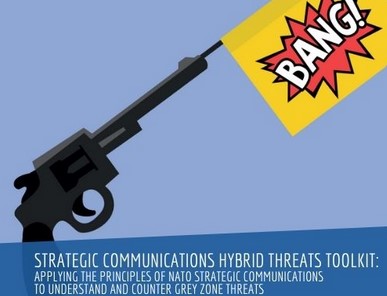Strategic Communications Hybrid Threats Toolkit - Applying the principles of NATO Strategic Communications to understand and counter grey zone threats
Strategic Communications Hybrid Threats Toolkit - Applying the principles of NATO Strategic Communications to understand and counter grey zone threats
Author(s): Monika Gill, Pia Hansen
Contributor(s): Ben Heap (Editor)
Subject(s): Media studies, Civil Society, Government/Political systems, International relations/trade, Security and defense, Political behavior, Politics and communication, Politics and society, ICT Information and Communications Technologies, Peace and Conflict Studies
Published by: NATO Strategic Communications Centre of Excellence
Keywords: Hybrid threat environment; strategic communications; Hostile narrative strategies; Hostile measures; vulnerabilities; nation weaknesses; Direct influence of public opinion; societal divisions; Agitation and civil unrest; Interference in elections;
Summary/Abstract: This research is for people who want to develop their understanding of dangers to national security that come under the umbrella of ‘hybrid threats’. Such threats involve a combination of different hostile measures, furthering an adversary’s strategic goals while occuring in the ‘grey zone’ which exists between peace, crisis and war. The report builds on our publication Hybrid Threats - A Strategic Communications perspective, which analysed 30 scenarios featuring hybrid activities by state actors. Data from the case studies is exploited further, deepening our understanding of hybrid threats and how they might be countered by applying the principles of NATO Strategic Communications. It aims to help the reader develop ways of looking at hybrid threats and then to appreciate how the Strategic Communications process might be applied at the national level. This involves understanding the information environment, then developing a plan which provides coherence to the various instruments a nation can use to leverage strategic influence. Strategic Communications is a realm which suffers from a divergence of definitional interpretations. While NATO Strategic Communications has arguably come of age, there is understandably a lack of commonality across the NATO nations as to how the term is used. Popular usage has Strategic Communications simply as being highly effective at what an organisation says. This confines communication to a narrow arena. Our report builds on NATO’s approach to Strategic Communications - a mindset or philosophy which is underpinned by process and supported by capabilities. When applied at the national level it provides a function of basic statecraft at the intersection of strategy and action.
- Print-ISBN-13: 978-9934-564-38-3
- Page Count: 48
- Publication Year: 2021
- Language: English
- eBook-PDF
- Table of Content
- Introduction

